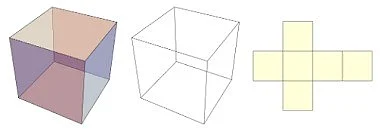Mastering Volume Calculations: Knowing Cubic Meter in Daily Life
Unlocking the Power of Cubic Meters: Calculating Volume in Daily Life

Volume is a key term in math and physics because it is defined as the spatial occupied area by an object that occupies space in three dimensions. Volumes play a major role in our lives, even in our daily lives, they can be calculated as the size of a container, room, or volume of water in the swimming pool. The cubic meter (m3) is probably the most prevalent unit used for volume measurement. This unit is the perfect fit in contexts such as construction projects, engineering, and scientific studies. In this article, we examine the idea of cubic meters and we learn how to calculate work out volume in cubic meters in different forms and under different circumstances.
Understanding Cubic Meters:
However, before we execute the calculations let us define a concise description of what a cubic meter implies. The definition of a cubic meter states that is a unit of volume which suggests the amount of a cube with its sides that are equal to a meter. It is pertinent to compare a cubic meter with a washing machine or a large refrigerator (a typical washing machine or a large refrigerator in that case). It is somewhere there. more precisely it is a cube that combines dimensions 1, 1, and 1 into a total of 1 meter.
Calculating Volume in Cubic Meters:
Rectangular Prism:
The rectangular prism is the most obvious shape to calculate volume, being more simple. The volume of a cubic prism in cubic meters, you get to its length, width, and height, all of it measured in meters. The formula is:
Volume = Length x Width x Height (meter) s
An example of this may be for you to determine the volume of a rectangular prism with dimensions 3 meters (x), 2 meters (y), and 1.5 meters (z). The volume would be
Cube 3 meter^3 = 9 m
Cylinder:
The optional volume for the cone is found by calculating either r or h. The formula for the volume of a cylinder in cubic meters is: As the formula for the dimensional volume of a cylinder we have:
The formula for calculating the volume is provided as follows: Using the formula π × r × h, r is the radius and h is the height.
Here we take its mathematical angle symbol as π (pi), the value of the r (radius) is in meters, and the h (height) value is also in meters. For instance, if the radius of a cylinder is 1.5 meters and its height is 4 meters, the volume would be: One example is the calculation of volume for a cylinder of a radius = 1.5 m and a height = 4 m:
Volume is were 3.14159×π(One meter+2(m))^{2}×4– meter ^{3}≈ 28.27 m^{3}.
Sphere:
The total volume of a sphere can be calculated based on the radius of the sphere. The volume (V, cu m) for a spherical shape is calculated as follows.
Volume = (4/3)× π × r2.
Using the same value of π as before, if the radius of a sphere is 2 meters, the volume would be: Taking the same value of π, the volume of the sphere will be: V= 4/3*π*r^3= 4/3*3.14*2^3= 33.51 mm^3.
V = (4π × 22/7 × 1 m)3 ≈ 33.51 cubic m.
Applications of Cubic Meters:
Construction:
As a matter of truth Cubic meters are vital for calculating the required volume of materials used in construction for projects. The materials from which the foundations are made, road construction aggregate, or framing lumber are only a few examples. Accurate quantity calculations of these items help to prevent over or under-allocation and cost management.
Shipping and Logistics:
Transportation of cargo units is hugely dependent on the suitable allocation of the shipment area. Cubic meters are used to measure shipping containers, warehouses, as well as cargo holds. This measurement is used to determine the capacities of these containers for materials. It will make the estimates of volumes more precise which is why logistics companies will turn it into an extended capacity for loadshipping, and hence the cost will be minimized.
Environmental Science:
Environmental scientists will measure the cubic meters of natural resources, for instance, water bodies and forests, as a form of volume. To determine a scale of volumes has multiple uses: qualifying the health of the ecosystem; making sure resources are used sustainably and planning conservation efforts are done effectively.
Architecture and Interior Design:
A cubic meter is used for space design and planning by architects and door interior designers. Once it is precisely determined the number, shape, and positioning of furniture, storage capacity, and volume of calculations become very critical to the creation of unique and functional settings.
Conclusion:
With volume calculations in cubic meters serving as a foundation, a gamut of applications is made possible in different areas of work. In fields such as construction engineering and logistics, as well as environmental science where the ability to correctly measure and manipulate volume units is crucial even though it is to be solved or a decision is being made. Through learning the idea of cubic meters as well as doing some numerical exercises, the need for good calculating skills arises, and after all, these skills are unquestionably useful in real life in both personal and career fields. Hence, those times when you face anything volume-related problems you become aware of that cubic meters are the key to all the solutions.
Disclaimer: The above is a contributor post, the views expressed are those of the contributor and do not represent the stand and views of Outlook Editorial.

























